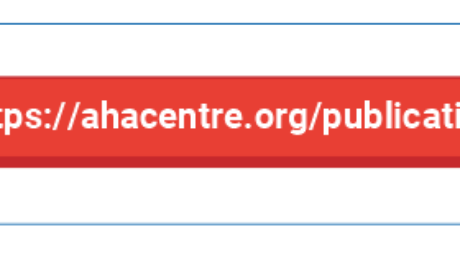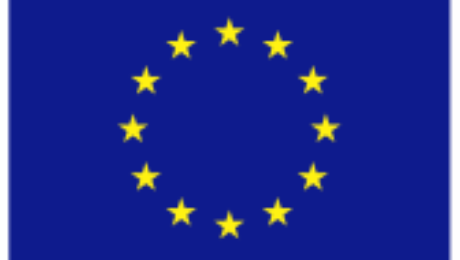
INTERVIEW WITH DIPO SUMMA,
RESOURCE MOBILISATION MANAGER AT THE AHA CENTRE
LACER’s Johanna Rixer sat down for a chat with Dipo Summa, Resource Mobilisation Manager at the AHA Centre and focal point for the LACER project, to discuss challenges, development and current priorities.
To what extent do differing capabilities among ASEAN Member States create challenges in effective regional response?
“The different capacities of the Member States is certainly a challenge in realising One ASEAN, One Response, Mr Summa says. The ambition to respond collectively as one is one of the biggest challenges, given that all Member States have different capacities. Even if the intention is shared by all. Having said that, there is a silver lining, a bright spot in the fact that the Member States already are capable to respond on an individual country level. It’s a matter of bringing the capacity under the regional umbrella. This is definitely a possibility for improvement within the next years of the AHA Centre’s development.”
What would you consider the best possible development of the AJDRP modules* in the future? In what ways could these be better aligned with current conditions and needs?
“The objective of the response plan is to be able to mobilise ASEAN resources, for immediate activation and deployment. If we can achieve that, we can find real satisfaction. We are truly working towards that goal and we need to have the resources and commitment of the Member States to achieve this. Right now we are in a quite good place with 5 Member States who have registered their assets, but it is not yet tested. This is our next step, to test and to see how it actually looks in practice.”
How can ASEAN deal with the growing differences in risk profiles among ASEAN Member States?
“Many of the aspects are beyond the control of the AHA Centre… what we can do is to focus on risk awareness, raising awareness and providing advice, rather than dealing with the issue of risk profiles as there are so many components that affect this. One mandate of the AHA Centre is to facilitate support when a disaster happens, and this can really help mitigate the disaster.”
How can AHA and ASEAN best assist Member States that face a recurring pattern of weather-related hazards including typhoons and flooding, along with associated displacement of populations? For instance, the Philippines during the period 2010−2021, reported more than 49 million people displaced, mostly triggered by storms. Is this a particular gap that ASEAN can help address?
“With regards to a recurring pattern of weather related hazards and climate change, here we are still focused on preparedness and response, capacity building programmes for member states and anticipatory actions. In this field there is room to do more… to develop a predictability system, supporting the Member States. This is also one of the priorities for the future.”
What do you see as other priorities for the AHA Centre in the coming 5 years?
“For me the AHA Centre will have several important priorities in the coming years. First, as outlined by the ASEAN Vision 2025, the AHA Centre should facilitate ASEAN responding collectively as one beyond the region. By 2024, the AHA Centre will conduct a feasibility study to create better understanding what this means. Secondly, the AHA Centre should continue to support innovation and implementation of new technologies in disaster management, in particular taking advantage of the continuous development in the field of big data analysis and artificial intelligence. Thirdly, the ASEAN Vision 2025 also mentioned the ambition to become a global leader in disaster management by leveraging through the long experience of the region in managing disasters in the region. To support this vision, the AHA Centre aims to become a regional knowledge hub on disaster management, where stakeholders can come to look for data, information and knowledge.”
* (deployable assets registered under the ASEAN Joint Disaster Response Plan)

Written by: Johanna Rixer | Photo Credit: AHA Centre

INTERVIEW WITH LACER RISK ASSESSMENT EXPERT
DR. EMMANUEL RAJU
The AHA Centre held the Public Launch and Webinar of the 3rd edition of the ASEAN Risk Monitor and Disaster Management Review (ARMOR) on 11 October 2022, supported by the European Union (EU). The Levering ASEAN Capacities for Emergency Response (LACER) project contributed to the launch webinar.
The theme was the intersection of disasters and pandemic. Against the backdrop of the health crisis endured globally as a result of COVID-19, the articles highlight how the pandemic affected disaster management policymaking across the ASEAN region. Of particular interest is how ASEAN has adapted its disaster management tools in response to the pandemic, including innovative methods, information and communication technology that can be used to improve the analysis of real-time data and the cross-border provision of aid during disasters, in anticipation of future pandemics.
LACER risk expert, Dr. Emmanuel Raju, participated as a panellist commenting on the article “Disaster and Pandemic: The Exacerbating Effects of COVID-19 to ASEAN’s Disaster Riskscape” by the AHA Centre Disaster Monitoring and Analysis team and Pacific Disaster Center. Queried on how the pandemic had impacted disaster management in Europe, Dr. Raju noted a number of challenges and opportunities for learning which have emerged. A key learning in the context of natural hazards is the importance of talking about vulnerability as a central issue in disaster risk management because in many places, it is very often the same communities, the same geographic locations, where vulnerable populations are repeatedly impacted by disasters or have seen worsening effects over and over.
The pandemic has also forced us to revisit the link between Disaster Risk Reduction (DRR) and sustainable development.
“If we truly want to achieve disaster risk reduction, we also need to think about the sustainable development goals because at the end of the day disaster risk reduction is about making sure that we have risk-informed development processes.”
LACER Risk Assessment Expert, Dr. Emmanuel Raju
LACER’s Johanna Rixer caught up with Dr. Raju after the event and posed some further questions about learning.
How can academic learning best contribute to developing the capacity of an actor like the AHA Centre that is focused heavily on humanitarian response?
“This is an important question. Most professionals from academia would like to see impact, not only theoretically but to be able to go from theory to practice. We should use the experience of academia and put into practice what we learn. The discussions we had during the webinar are one example of such an opportunity. We also had a very interesting and fruitful workshop within the LACER project looking at risk from a scientific standpoint, where we had participants from the EU and the AHA Centre. The focus was to dig deeper on how we could use science to communicate risks in our day-to-day work. ”
How does the EU deal with differences in risk profiles among its members?
“It’s not easy. Different members have different interests. In this context it is important to continue to talk about impacts of climate change and extreme weather, as well as to nudge political actors to have these issues high up on the agenda. Disaster vulnerability is central to this discussion – both within the EU and the ASEAN. There are also lessons exchanged and learned between EU and ASEAN. Some factors continue to be central to the advancement of DRM in both Europe and ASEAN, such as applying lessons learned to leadership, keeping a focus on vulnerability, etc.”
What do you see as the priorities of ASEAN and the AHA Centre in the coming 5 years?
“Promoting localisation of efforts in disaster risk management, to allow a more robust and timely response and risk reduction efforts, will be of great significance to ASEAN over the next few years. And of course post-disaster, there is the issue of promoting recovery that is green and sustainable.”

Written by: Johanna Rixer | Photo Credit: AHA Centre, NORDRESS

17TH MEETING OF THE AHA CENTRE GOVERNING BOARD
After two years of meeting online, the 17th AHA Centre Governing Board (GB) meeting was held in hybrid format on 19 October 2022 as part of the 41st Meeting of the ASEAN Committee on Disaster Management (ACDM), 10th ASEAN Ministerial Meeting on Disaster Management (AMMDM), 11th Conference of the Parties to AADMER (COP to AADMER) and Related Meetings in Bangkok, Thailand. The meeting was chaired by the Department of Disaster Prevention and Management of Thailand.
During the meeting, the AHA Centre reported the activities conducted by the Centre from June to September 2022. It was a busy period as many activities that were previously held online were now being conducted face-to-face or in hybrid format. Within the reporting period, the AHA Centre was engaged in a total of 26 events and knowledge exchanges. Among these events, the AHA Centre was the organiser/co-organiser of 17 events, and participated in 12 events. The AHA Centre also organised or participated in 29 training activities and courses.
From June to September 2022, the AHA Centre’s Disaster Monitoring and Analysis Unit had recorded 418 disaster events in the ASEAN Disaster Information Network (ADINet) and disseminated 7 flash updates, 3 situation updates, 18 weekly disaster updates, and prepared 4 monthly disaster reviews and seasonal outlooks. The AHA Centre also conducted preparedness and response activities for the ASEAN Member States affected by Tropical Cyclone NORU, including the Philippines, Viet Nam, Lao PDR and Cambodia, and Thailand. Flash Update #1 and #2 were issued on 24 and 26 September 2022 respectively, followed by the issuance of Situation Update #1 on 27 September, Situation Update #2 on 28 September, and Situation Update #3 on 30 September 2022. Two Emergency Operations Centre (EOC) briefings were also held in response to Tropical Cyclone NORU, the first on 25 September 2022, and the second on 26 September 2022. The second EOC briefing was attended by all staff of the AHA Centre and the ASEAN Secretariat, to discuss the latest information on Tropical Cyclone NORU and the possibility of support that ASEAN and the AHA Centre can provide.
Following the meeting, the AHA Centre officially launched the second phase of the Project on Implementation of the Memorandum of Intent (MoI) of the AHA Centre and the Swiss Agency for Development and Cooperation (SDC), which will contribute to enhancing the capacity of the AHA Centre and ASEAN Member States in responding to disasters.
The Governing Board took note of the AHA Centre’s achievements within the reporting period, and commended the Centre for being on track to completing the majority of the activities planned for 2022. The AHA Centre is grateful for the continued guidance and support extended by the Governing Board, and hopes to carry forward the success of this year to 2023.
THE ACTIVITIES REPORTED WITHIN THIS PERIOD ALSO INCLUDED
The AHA Centre Executive (ACE) Programme on-site course
10 June – 10 August 2022, Thailand
The ASCEND Assessor Training
27 June-1 July 2022, in Ho Chi Minh, Viet Nam
The 13th ASEAN-Emergency Response and Assessment Team (ASEAN-ERAT) Induction Course
20-28 July 2022, in Hua Hin, Thailand
The 11th Meeting of the ASEAN-ERAT Advisory Group and 3rd Meeting of the Project Steering Committee for the ASEAN-ERAT Phase II Project
29 July 2022, in Bangkok, Thailand
The 2nd Emergency Operations Centre Exercise (EOCX)
3-4 August 2022, on-site at the AHA Centre and via video conference
The ACE Programme Graduation Ceremony and Evaluation Workshop
8 August 2022, Thailand
The 2nd Project Steering Committee (PSC) Meeting of the “Strengthening AHA Centre’s Capability to Respond Effectively to Human Induced Crises” (AHA-Australia)
29 August 2022, at the ASEAN Secretariat in Jakarta, Indonesia
The 2nd ASEAN Joint Disaster Response Plan (AJDRP) Workshop
31st August 2022, at the ASEAN Secretariat in Jakarta, Indonesia
Participation of ASEAN-ERAT members in the INSARAG Asia Pacific Regional Earthquake Response Exercise
5-8 September 2022, in Bali, Indonesia
The 5th ASCEND Project Steering Committee Meeting
6 September 2022, via video conference
The 7th Project Steering Committee Meeting of the ACE Programme
6 September 2022, via video conference
The 2nd AIM-Net Meeting & Workshop
12-14 September 2022, in Jakarta Indonesia and via video conference
The ASCEND Benchmarking Visit to South Korea,
26-30 September 2022, in South Korea
The ASEAN-ERAT Level 2 Course on Rapid Needs and Damage Assessment
26-30 September 2022, in Kuala Lumpur, Malaysia
The ASEAN-ERAT Level 2 Course on Information Management
3-7 October 2022, in Kuala Lumpur, Malaysia
The ARMOR 3rd Edition Public Launch and Webinar
11 October 2022, via video conference.

THE 2ND ASEAN JOINT DISASTER RESPONSE PLAN WORKSHOP
The 2nd ASEAN Joint Disaster Response Plan (AJDRP) Workshop was organised on 31 August 2022 at the ASEAN Secretariat in Jakarta, Indonesia. Hosted by the AHA Centre and supported by the European Union, the workshop brought together representatives from the National Disaster Management Offices (NDMOs) of Brunei Darussalam, Indonesia, Lao PDR, Malaysia, Myanmar, the Philippines, Singapore, Thailand, and Viet Nam.
Also present at the event were representatives from the Mission of the European Union to ASEAN, the ASEAN Secretariat and the United Nations Office for the Coordination of Humanitarian Affairs (UNOCHA), as well as an observer from the United Nations Development Programme (UNDP). The event was opened by the H.E. Igor Driesmans, Ambassador of the European Union to ASEAN, who expressed his appreciation towards the commitment of the ASEAN Member States in developing the AJDRP.
Endorsed on 11 October 2016 at the 29th Meeting of the ASEAN Committee on Disaster Management (ACDM) in Manado, Indonesia, the AJDRP provides a common framework for operationalising the vision of One ASEAN One Response. It was developed to strengthen the implementation and interoperability of various ASEAN mechanisms, and enhance cooperation and coordination with established national and international mechanisms and the humanitarian community in the region.
Prior to the 2nd AJDRP Workshop, the ASEAN Member States had identified three possible large-scale emergencies with significant impact on the population in the ASEAN region during the inaugural Workshop held in 2016. These scenarios include a 7.2M earthquake in Metro Manila in the Philippines, a tsunami triggered by a megathrust earthquake in Indonesia, and a super cyclone in Myanmar’s Ayeyarwardy Delta. Subsequently, three country-level contingency planning workshops were held in Manila (Philippines) in October 2017; Nay Pyi Taw (Myanmar) in December 2017, and Jakarta (Indonesia) in March 2018.
Against this backdrop, the 2nd AJDRP Workshop was implemented with three main objectives in mind. First, to share the gaps and needs identified in the three country-level contingency planning workshops in Manila, Nay Pyi Taw, and Jakarta. Second, to develop a strategy for enhancing the coordination and potential mobilisation of resources with NDMOs and international organisations, in responding to the three aforementioned scenarios and other potential disasters, such as multi-hazard disasters. And third, to explore potential new scenarios for ASEAN’s joint collective response.
AC Abdul Razak Abdul Raheem, Director of the Planning and Organisation Department of the Singapore Civil Defence Force (SCDF) and Co-Chair of the ACDM Working Group on Preparedness, Response, and Recovery (PRR) said that the Workshop would continue ASEAN’s efforts to build on the AJDRP in the spirit of One ASEAN One Response. “On that note, let us look forward to an engaging and fruitful 2nd AJDRP Workshop,” he added.
The high level of enthusiasm and expertise brought by the workshop participants led to an intriguing and constructive exchange of ideas. A consensus was reached to move forward with an evaluation of the potential gaps or needs for the three AJDRP scenarios. To this end, the workshop participants came to the agreement that as the next step, the AHA Centre would need to work closely with the respective NDMOs of Indonesia, Myanmar and the Philippines to conduct the evaluation.
“This workshop will take us one step closer towards achieving the vision of One ASEAN One Response, which is the quick and well-coordinated deployment of the full range of capacities of ASEAN Member States, regional institutions, and humanitarian actors in the region, with potential support from the international communities if needed, to save more lives and prevent further losses from disasters.”
Mr. Lee Yam Ming, Executive Director of the AHA Centre

Written by: Gladys Respati | Photo credit: AHA Centre

















